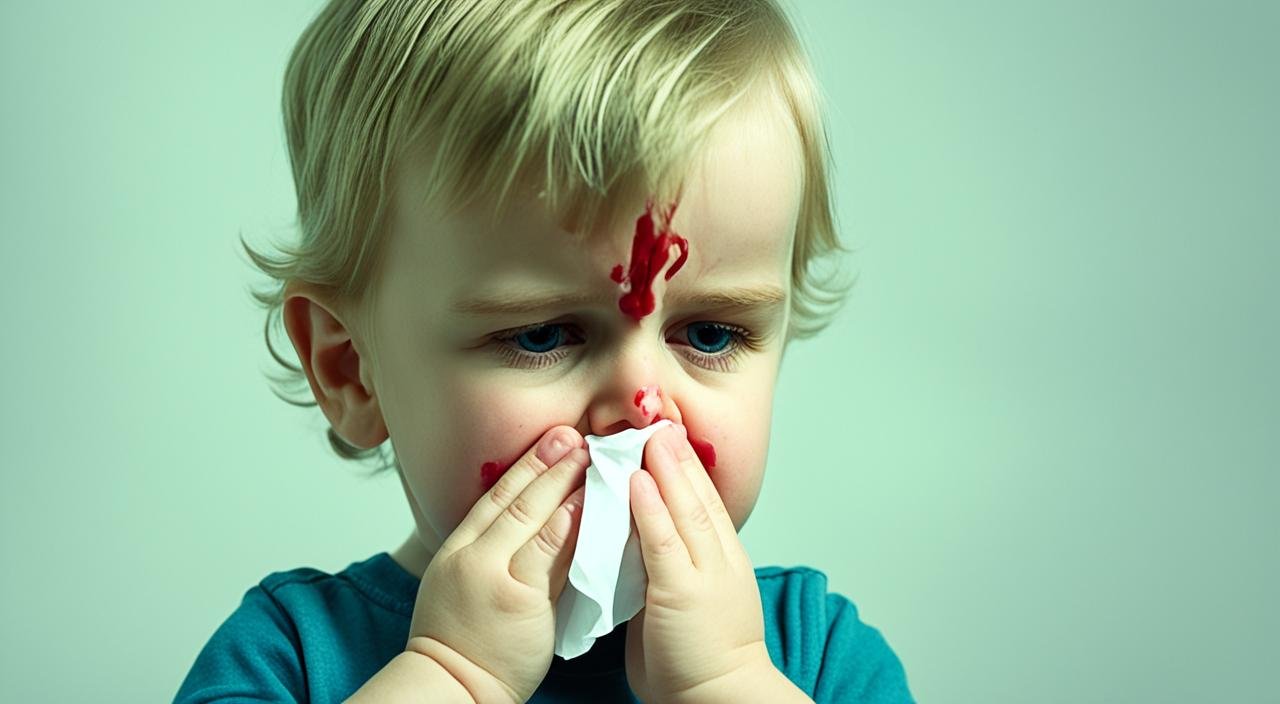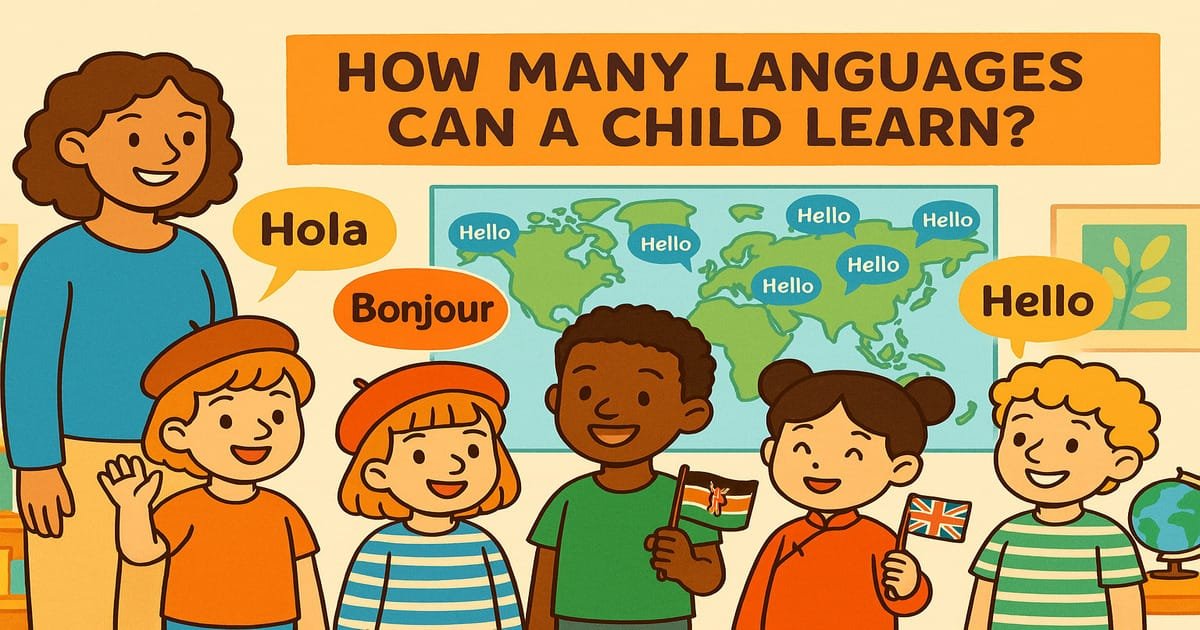A nosebleed in a child can be a distressing experience for parents, but in most cases, it is not serious and can be managed at home. It is important to stay calm and reassure the child during a nosebleed. Here are some quick and effective remedies to stop a nosebleed in a child:
1. Keep the child sitting or standing upright and leaning slightly forward to prevent blood from flowing down the throat.
2. Avoid stuffing tissues or other materials into the nose to stop the bleeding.
3. Instead, firmly pinch the soft part of the child’s nose for a full 10 minutes.
4. If bleeding hasn’t stopped after the first attempt, repeat the pressure.
5. If the bleeding persists after the second try, it is advisable to call a pediatrician or go to the nearest emergency department.
Picking the nose, dry or irritated nasal membranes, or nasal injuries are common causes of nosebleeds in children. Addressing the underlying cause is important to prevent recurrent nosebleeds. Medical attention should be sought if the child has frequent or severe nosebleeds or if there are other concerning symptoms.
Key Takeaways:
- Keep the child sitting or standing upright and leaning slightly forward during a nosebleed to prevent blood from flowing down the throat.
- Avoid stuffing tissues or other materials into the nose to stop the bleeding.
- Firmly pinch the soft part of the child’s nose for a full 10 minutes to stop the bleeding.
- If bleeding persists after the second attempt, seek medical advice.
- Address the underlying cause to prevent recurrent nosebleeds.
Causes of Nosebleeds in Children
There are numerous factors that can cause nosebleeds in children, including:
- Dry or Irritated Nasal Membranes: Dry air in the environment or heated indoor air can dry out the nasal membranes, leading to nosebleeds.
- Common Cold: The common cold can cause nasal congestion and irritation, increasing the likelihood of nosebleeds in children.
- Nose-Picking: Children who pick their noses, especially toddlers, can damage the delicate nasal membranes, resulting in nosebleeds.
- Allergic Rhinitis: Allergies such as hay fever can trigger inflammation and nasal irritation, potentially causing nosebleeds.
- Chronic Conditions: Certain chronic conditions like cystic fibrosis can contribute to the occurrence of nosebleeds in children.
To manage and prevent nosebleeds in kids, it’s important to take the following steps:
- Keep the Child’s Nose Moist: Use saline nasal sprays or gels to keep the nasal passages lubricated and prevent dryness.
- Discourage Nose-Picking: Teach children not to pick their noses, as it can lead to nasal injuries and subsequent nosebleeds.
- Address Underlying Allergies: If your child has allergic rhinitis, consult a healthcare professional for appropriate treatment options to reduce nasal inflammation and minimize nosebleeds.
- Monitor Nosebleed Frequency: If nosebleeds persist or occur frequently, it may be indicative of an underlying blood clotting disorder, and it is advisable to seek medical evaluation.
Remember, prevention is key when it comes to managing nosebleeds in children. By addressing the causes and taking preventive measures, parents can help minimize the occurrence of nosebleeds and ensure the well-being of their little ones.
| Potential Causes | Suggested Prevention |
|---|---|
| Dry or Irritated Nasal Membranes | Use a humidifier to add moisture to the air, especially during dry seasons or in heated indoor environments. |
| Common Cold | Encourage good hygiene practices, such as frequent handwashing, to reduce the risk of contracting cold viruses. |
| Nose-Picking | Keep your child’s nails trimmed short and teach them not to insert objects into their noses. |
| Allergic Rhinitis | Consult an allergist to identify and manage allergens that may trigger nasal symptoms and nosebleeds. |
| Chronic Conditions | Work closely with your child’s healthcare provider to manage underlying chronic conditions and address any associated nosebleed risks. |
Tips to Stop a Nosebleed in a Child
When dealing with a nosebleed in a child, it’s important to stay calm and take immediate action to stop the bleeding. By following these steps, you can effectively provide child nosebleed first aid and ensure proper pediatric nosebleed care.
1. Reassure the child and maintain a safe position:
- Stay calm and reassure the child that they are safe.
- Have the child sit upright in a chair or on a caregiver’s lap.
- Tilt the child’s head slightly forward.
- Avoid having the child lean back, as this can cause blood to flow down the throat and potentially lead to vomiting.
2. Apply gentle pressure:
- Gently pinch the soft part of the child’s nose, just below the bony ridge, using your thumb and index finger.
- Pinch firmly but not too forcefully to avoid causing additional discomfort.
- Hold the pressure for about 10 minutes without releasing or checking if the bleeding has stopped. This continuous pressure allows the blood vessels to constrict and form a clot.
3. Repeat if necessary:
- If the bleeding hasn’t stopped after 10 minutes, continue applying pressure for another 10 minutes.
- Avoid prematurely releasing the pressure, as this may disrupt the clotting process and prolong the bleeding.
4. Seek medical advice:
- If the bleeding persists after multiple attempts or if it is severe and uncontrollable, it is recommended to seek medical advice from a pediatrician.
- Medical professionals can provide further guidance and ensure appropriate treatment for treating nosebleeds in children.
Remember, while nosebleeds in children are usually not serious, it’s essential to provide prompt child nosebleed first aid and proper pediatric nosebleed care. By following these tips, you can effectively stop the bleeding and ensure the well-being of your child.
When to Seek Medical Attention for a Nosebleed in a Child

Most nosebleeds in children are benign and self-limiting, but there are situations where medical attention should be sought. It is important to call a pediatrician right away if a child is pale, sweaty, or unresponsive, or if there is a significant amount of blood loss. Nosebleeds after a blow or injury to the head should also be evaluated by a medical professional.
Additionally, if a child has frequent or severe nosebleeds, or if the bleeding is accompanied by bleeding from the mouth or vomiting blood, it is advisable to seek medical advice. Children with certain underlying conditions, like clotting disorders, may be more susceptible to nosebleeds, and their parents should be vigilant about nose-picking habits.
When to Seek Medical Attention:
- Pale, sweaty, or unresponsive child
- Significant amount of blood loss
- Nosebleeds after a head injury
- Frequent or severe nosebleeds
- Bleeding from the mouth or vomiting blood
“If your child experiences any of these symptoms or conditions, it is important to seek medical attention for proper evaluation and care.” – Dr. Sarah Johnson, Pediatrician
Remember, it is better to be safe and have a healthcare professional assess your child’s condition. They can provide appropriate guidance, offer treatments specific to your child’s needs, and address any underlying concerns. Seeking medical attention when necessary ensures the well-being and health of your child.
| When to Seek Medical Attention: | Signs to Watch for: |
|---|---|
| A child is pale, sweaty, or unresponsive | Paleness, excessive sweating, unresponsiveness |
| Significant amount of blood loss | Excessive bleeding with difficulty controlling it |
| Nosebleeds after a blow or injury to the head | Head injury preceding the nosebleed |
| Frequent or severe nosebleeds | Nosebleeds occurring frequently or difficult to stop |
| Bleeding from the mouth or vomiting blood | Blood present in the mouth or vomit |
Preventing Recurrent Nosebleeds in Children
To prevent recurrent nosebleeds in children, there are several measures parents can take. By implementing these preventive strategies, parents can help minimize the occurrence of nosebleeds in their little ones.
1. Keep nails short
One common cause of nosebleeds in children is nose-picking. Keeping your child’s nails short can minimize the risk of injury to the delicate nasal membranes, reducing the likelihood of nosebleeds.
2. Maintain nasal moisture
Ensuring that the inside of your child’s nose is adequately moist can help prevent dryness and irritation, which are common triggers for nosebleeds. Use a saline nasal spray or gel to keep the nasal passages moisturized. You can also apply a small amount of petroleum jelly or antibiotic ointment around your child’s nostrils to provide additional moisture.
3. Use a cool-mist humidifier
Dry air in the home can contribute to dry nasal membranes, making children more susceptible to nosebleeds. Running a cool-mist humidifier or vaporizer in your child’s bedroom can help maintain a proper humidity level, preventing nasal dryness. Remember to clean the humidifier regularly to prevent the buildup of mold or bacteria.
4. Protect against nose injuries
Children are prone to injuries, especially during sports or other physical activities. Ensure that your child wears appropriate protective athletic equipment, such as helmets or face masks, to safeguard against potential nose injuries. This can significantly reduce the risk of nosebleeds caused by trauma.
By following these preventive measures, parents can minimize the occurrence of recurrent nosebleeds in their children. However, if nosebleeds persist or become severe, it is advisable to consult a pediatrician for further evaluation and guidance.
Steps to Stop a Nosebleed in a Child
There are several steps parents can follow to effectively stop a nosebleed in a child. The first step is to have the child sit up straight, either in a chair or on a caregiver’s lap, with their head slightly tilted forward. It is not advisable to tip the head back, as this can cause blood to flow down the throat and potentially lead to choking. If available, an over-the-counter nasal decongestant can be sprayed into the bleeding nostril.
Next, apply firm pressure to the soft sides of the child’s nose, just above the nostrils, using a tissue or clean washcloth. Maintain the pressure for at least 10 to 15 minutes before checking if the bleeding has stopped. If bleeding persists, applying an ice pack or cold compress to the bridge of the nose can help constrict blood vessels and stop the bleeding. It is important to remain calm during the process, as panicking can prolong the bleeding. If the bleeding continues for more than 20-30 minutes, it is recommended to seek medical guidance.
Following these steps can help parents effectively stop a nosebleed in their child. Remember, staying calm and applying direct pressure are key to stopping the bleeding. If necessary, don’t hesitate to seek medical attention for further evaluation and treatment.
Recovery and Preventative Measures After a Nosebleed
After a nosebleed, it is important to take certain measures to promote healing and prevent reoccurrence. To ensure a smooth recovery, remember to blow the nose gently, avoiding forceful blowing that can dislodge healing scabs and restart the bleeding. Sneezing should also be done through an open mouth, as closed-mouth sneezing can disturb the healing process.
To prevent further nosebleeds, it is advisable to avoid heavy lifting and strenuous activities that can increase blood pressure and lead to bleeding. Nose-picking should be avoided at all costs, as it can damage blood vessels and cause more nosebleeds. Additionally, it is essential to keep the inside of the nose moist, especially during dry winter months.
To achieve this, using saline nasal sprays, nasal gels, or running a humidifier in the home can be highly beneficial. By following these recovery and preventative measures, you can ensure pediatric nosebleed care and child nosebleed prevention, providing a healthier and more comfortable environment for your child.
FAQ
How can I stop a nosebleed in a child effectively?
Keep the child sitting or standing upright and leaning slightly forward. Pinch the soft part of the child’s nose for a full 10 minutes and avoid stuffing tissues or other materials into the nose. If bleeding persists after two attempts, seek medical attention.
What can cause nosebleeds in children?
Nosebleeds in children are commonly caused by dry or irritated nasal membranes, picking the nose, or nasal injuries. Allergic rhinitis (hay fever) and chronic conditions like cystic fibrosis can also contribute to nosebleeds in children.
How do I stop a nosebleed in a child?
Have the child sit upright with their head slightly tilted forward. Pinch the soft part of their nose for 10 minutes. If bleeding persists, apply pressure again. If it continues after 20-30 minutes, seek medical guidance.
When should I seek medical attention for a nosebleed in my child?
Seek immediate medical attention if the child is pale, sweaty, or unresponsive, or if there is a significant amount of blood loss. Nosebleeds after a head injury or if the child has frequent or severe nosebleeds should also be evaluated by a medical professional.
How can I prevent recurrent nosebleeds in my child?
Keep the child’s nails short to prevent nose-picking injuries. Use saline nasal sprays or gels to keep the inside of the nose moist. Running a cool-mist humidifier or vaporizer in the child’s bedroom can also help combat dry air in the home. Ensure the machine is kept clean to prevent the buildup of mold or bacteria.
What steps should I follow to stop a nosebleed in my child?
Have the child sit upright with their head tilted slightly forward. Apply firm pressure to the soft sides of their nose for at least 10-15 minutes with a tissue or clean washcloth. If bleeding persists, applying an ice pack or cold compress to the bridge of the nose can help. Seek medical advice if bleeding continues for more than 20-30 minutes.
What should I do after a nosebleed in my child?
Blow the nose gently, sneeze through an open mouth, and avoid heavy lifting and strenuous activities. Discourage nose-picking and keep the inside of the nose moist using saline nasal sprays or running a humidifier in the home.





